Text
A Proposal of Change
For the past few weeks I have been working on a book project, or at least an appetizer for a book. At the moment I have a finished product, containing a shallow content of what could come, but also this product should be enough to understand my thought and goals. If I am going to continue working on this book is at the moment quite uncertain.
The book is an examination of the summer course that I have been taking this summer and as time sets it's limits, I had to make ends meet. I however, feel like I could elaborate this book so much more, going into details in my analysis and also make a proper proposal of Change as a finishing conclusion of the book.
I have added a link to the online e-book that I created, feel free to read it!
http://data.axmag.com/data/201507/20150721/U137629_F346207/index.html
5 notes
·
View notes
Text
Going to do some analyzing of Malmö today! Exciting new project going on and I hope to unveil some interesting points about the urban planning in Malmö!
“Forget the damned motor car and build the cities for lovers and friends.”
— Lewis Mumford, My Works and Days (1979)
8 notes
·
View notes
Photo

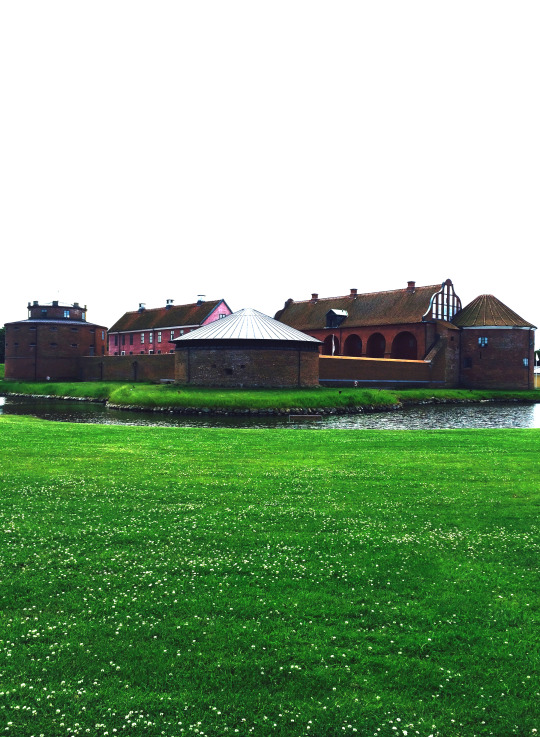
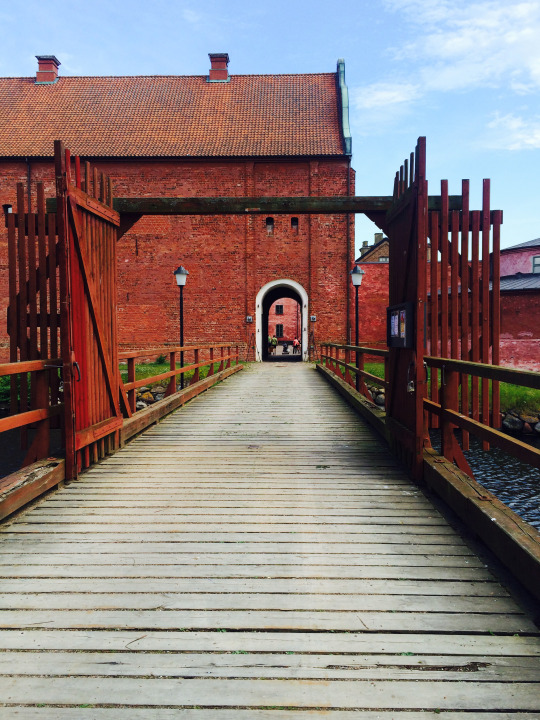
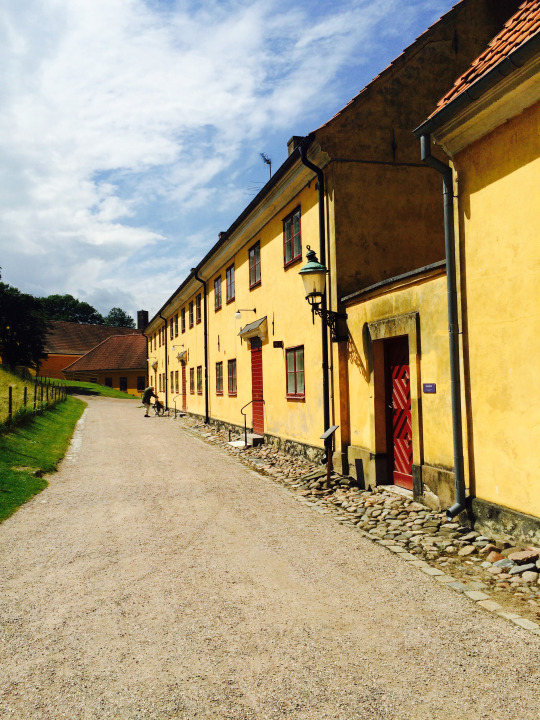

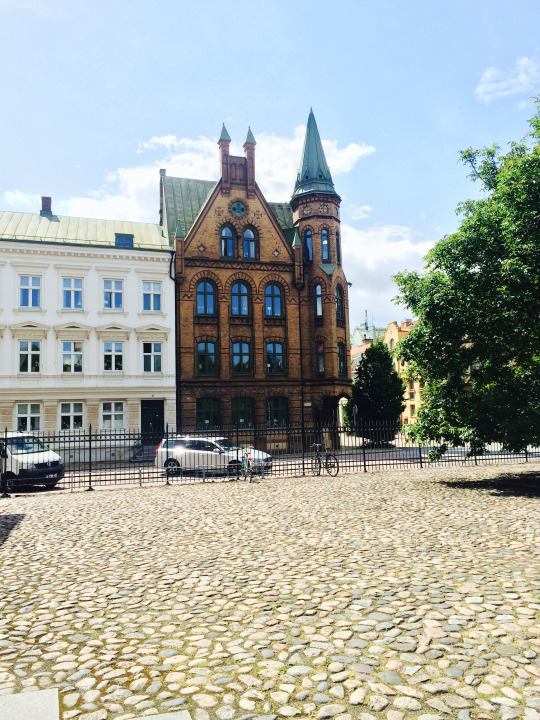


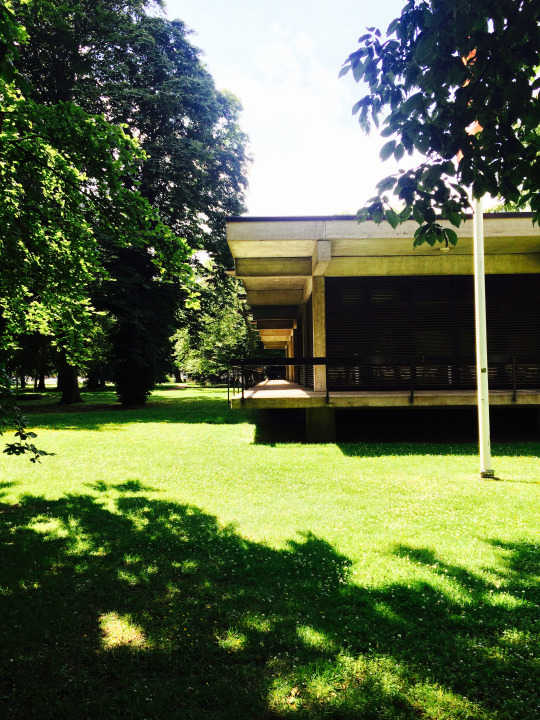
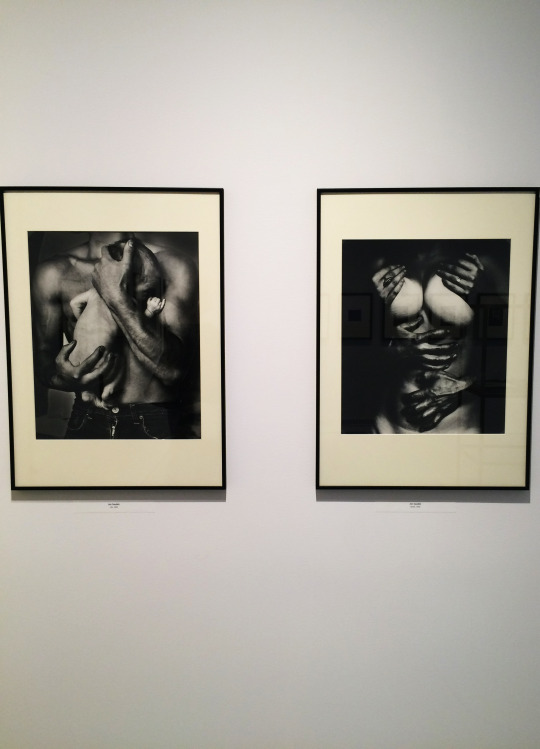
Landskrona
Yesterday was a day of adventure; a friend and me travelled to Landskrona, a city close to the sea between the two large cities Malmö and Helsingborg. The city is quite old, and therefore has a lot of beautiful buildings and history. Everywhere in the small town there are traces of a grand time with castles and fortresses. We have studied architecture for two years now and a certain building has popped up time to time; the Townhouse. A small and modern house built in between small picturesque townhouses. The building has been equally criticised and praised, the discussion about breaking norms always get brought up when modern buildings get built next to or in the area of old ones.
I personally think the building fits well in the surrounding area. The building might be the newest on the street, but certainly not the only modern one. After taking a look at the building we moved on to the historic parts of the city; the so-called Citadelle: A fortress/castle built mid 1500. The Landskrona Castle was quite a vision as you can see on the pictures, I was personally fascinated in the way they have preserved it and how the different eras shows. After exploring the castle and the surroundings we went on to se some exhibitions on different locations around the city. We ended up having seen some ten different exhibitions! One that we had seen before, but that had been curated very different from the first time we saw it, creating a slightly different feel. The exhibitions where everything from textile-conceptual art to photography, commercial history, Landskrona history, Nature and cars history. An amazing day, filled with new knowledge and food for thought.
5 notes
·
View notes
Photo


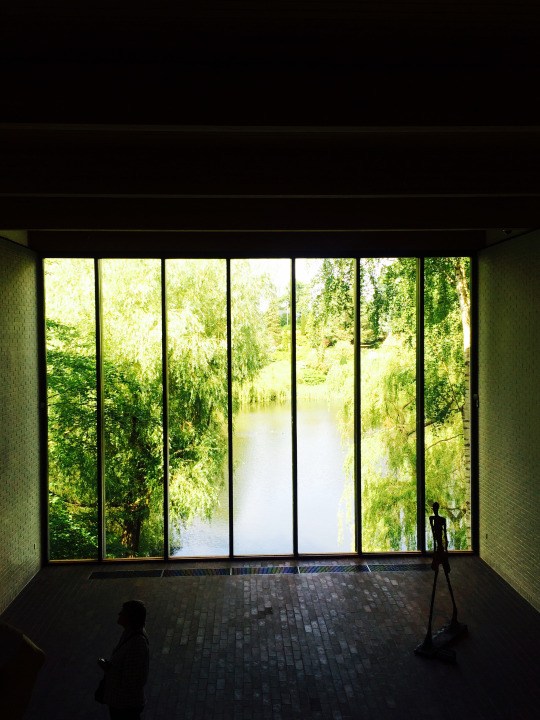

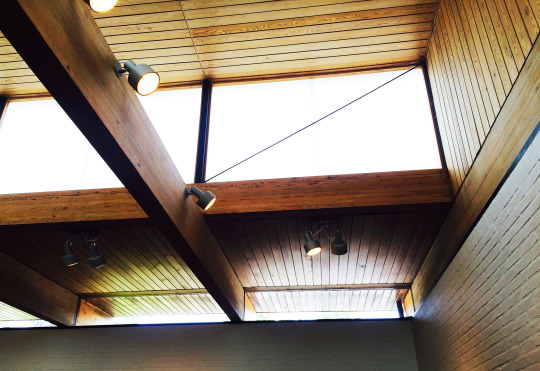

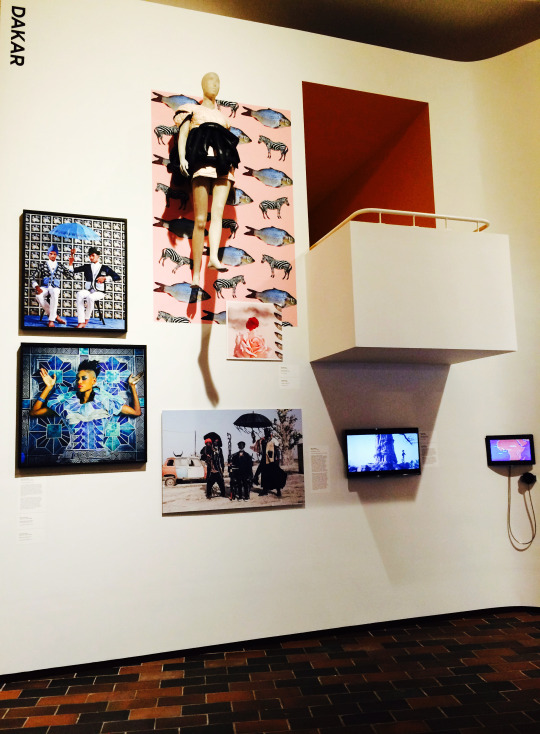


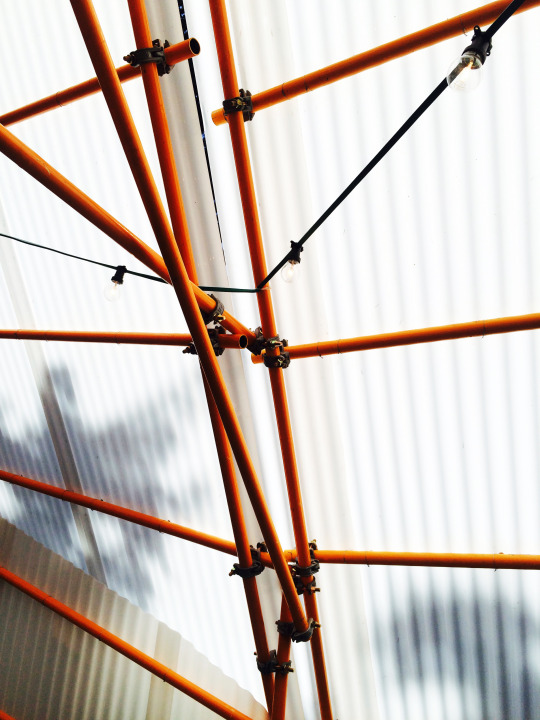
Louisiana Museum of Modern Art
Yesterday we took another trip, a trip to Louisiana museum of modern art in Denmark. The museum building is divided into different wings. The building was built in the late 50's in a modern style.
I love Art and I love Architecture, but I have to say that when I first saw the museums building, I thought; this Architecture is a piece of Art!
The details have been carefully shaped and designed; even the details of the fire alarm button have been thoroughly designed and look amazing! It's not just a piece of functional plastic button, it's a little piece in brass connected to all of the other details in brass, making a coherent expression throughout the building.
The way the museum was designed reflects the way the whole institution takes care of their exhibitions. Every exhibition, every piece of art has been carefully curated with such a finesse it reminds me about the theatre, the opera and the ballet; A composed piece of art, letting the different pieces work together in a symphony of expressions.
#louisiana dk#art#architecture#imagining malmo#design#details#theatre#exhibition#art exhibition#denmark
5 notes
·
View notes
Photo
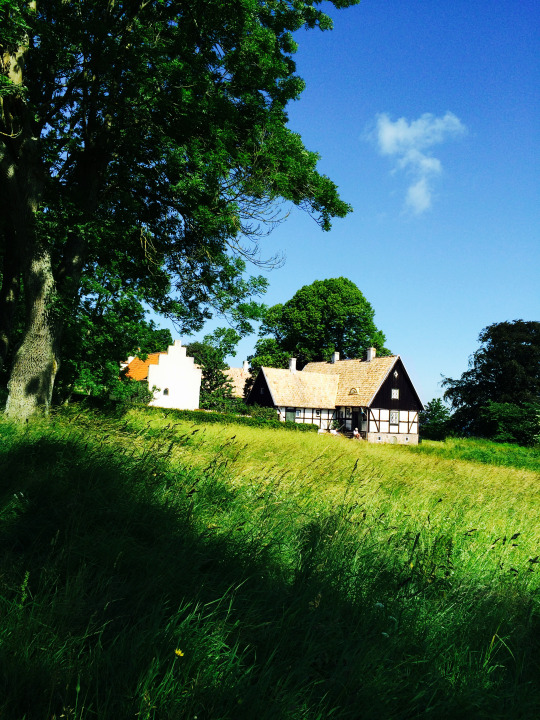

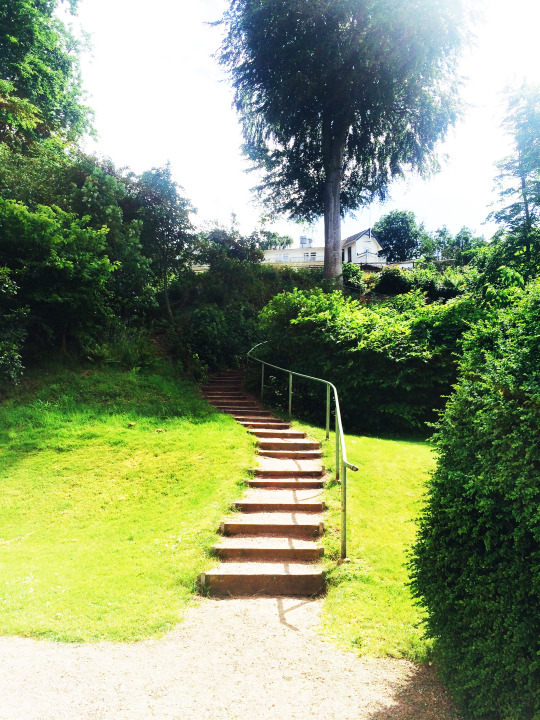





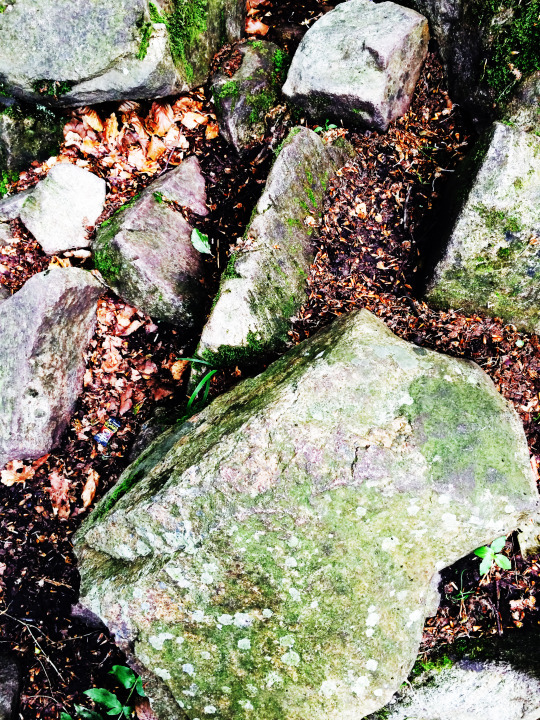

The surroundings of Ladonia, Nimis and Arx.
The fisherman's village of Arild, the forest, the woods and the wonders.
1 note
·
View note
Photo


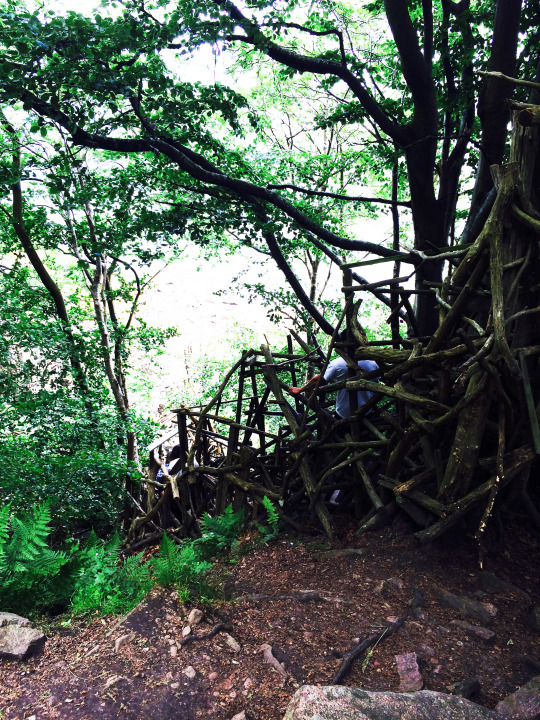


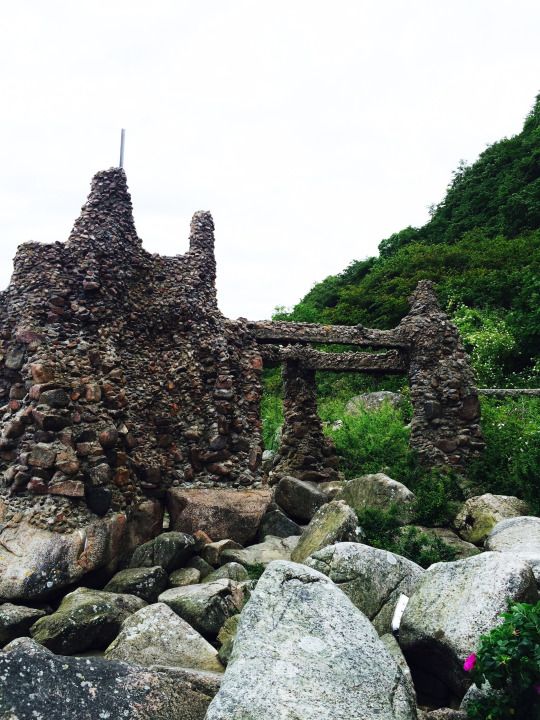



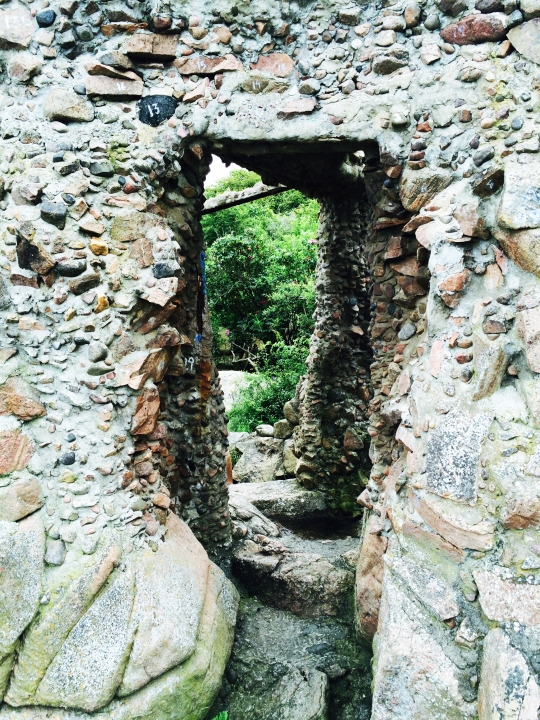
Ladonia, Nimis and Arx.
Yesterday we went to the independent state of Ladonien, an independent state consistent of an area on 1km2. A state founded by the artist Lars Vilks. The state contains of the two pieces of art: The Nimis and the Arx; Two tower like, built-up constructions.
What surprised me was how much they both reminded me about the Sagrada Familia by Gaudi in Barcelona, Spain. Especially the Arx; built by rocks and clay - the piece of art who Vilks claims to be a book, and therefore was saved in a lawsuit where the book was a statement within our freedom of speech.
The two artworks and their association to the sea, the built environment and the Sagrada Familia makes me wonder; What is art and what is architecture? When they in some way are a symbiosis of the two?
7 notes
·
View notes
Photo





SUM-UP OF THE WEEK.
This week I have found natures own hangout places on Österlen, I’ve hardly been able to walk properly due to an unexpected try-out on Crossfit (exhausting and so much fun! The soreness however; has been the worst! I have explored Malmo Museum; where I saw some great posters on canvas from the Baltic exhibition in 1914, had two great lecturers; where one of them talked about sustainable Malmö and the other one; Museums and how to curate (great topics that are very much in tune with what I want to work with). I have been at the top of Malmo Live in the Sky Bar (note to self: NEVER go back up there - its terrifying, although the most gorgeous view of Malmo I've ever seen!). I have been at the beach, enjoying actual bathing and playing in the water for the first time since I was a kid, gotten a bit sunburnt, eaten Mexican food, read parts of some really good books concerning Urban planning. And I've had way to little time to maintain this blog, this week has been a week full of life.
1 note
·
View note
Text
Human-Scale with Jane Jacobs
I have also read parts of the book The death and life of great American cities by Jane Jacobs. Jacobs is just like Kevin Lynch: straight on, no going around the topic. The first sentence in her introduction is as follows; "This book is an attack on current city planning and rebuilding." This sentence just toss you into the book, a great way to make me interested.
Jane Jacobs is criticizing the way that city planners and politicians choose to not listen to their heart and the facts that they see in front of them. Certain people who have power positions in today’s society; sometimes choose to believe facts that they hear or simply jump on a trend within the "power society".
This is the second text that I have read by Jane Jacobs. In 1958, she wrote an article for the American magazine Fortune. The article, "Downtown is for people" is a critical review of modernism, urban planning, and concerns around the development of the urban area in the United States called downtown. Downtown was the original centre of US cities but as a city grew, conditions changed and contemporary planners wanted to build away the old.
Jacobs believes that the development of an area should be based on the people on the spot using it, she says that it is for the people, not the buildings; that we are building the city. In the article she also writes that neighbourhoods and areas obviously need to be developed, and that the reasons for this are several. But she questions the approach.
Jacobs writes that planners must take to the streets. That the only way to develop a district; is to walk along the streets and getting to know them. To sit down on a bench and watch the people on the street, to see and observe how they are using it.
In the article Jacobs takes up how important it is to never tear down all the existing buildings in an area. It has to do with the activities the area contains. One of the biggest advantages of a mixed development is the mix of selections the field can contain. She believes that the old buildings provide opportunities for different types of businesses to establish themselves. It also has to do with holding the rent down by not building new expensive buildings. With a low rent, smaller companies; such as a business with a narrow range or creative workshops such as art studios can live on. Keeping these sorts of businesses in an area, contributes to a more vibrant neighbourhood.
I can see a clear and consistent theme in Jacobs texts. The importance of building with the human-scale in mind, and that a situated knowledge of the area is a key to successful development. That city planners must study and observe the area before developing it, they must talk to people who are using the space on a daily basis. Only with a thorough situated knowledge can the planner create new additions and improve the existing life in the area.
0 notes
Text
Nodes or Touch-Points?
The city image and its elements, a part of the book: the image of the city written by Kevin Lynch.
What I liked about this book is that it's very relevant and straight on point. It isn't very deep or poetic, something I quite appreciate when it comes to books like this. The part called The city image and its elements is a part where Lynch discuss the different layers or elements that the city is built around. The Elements are to different people, different ways of seeing and orienting around a city. One of the elements that Lynch brings up is called nodes. "Nodes are points, the strategic spots in a city into which an observer can enter, and which are the intensive foci to and from which he is traveling." These points are places that people need to go to, and certain attraction points in people’s life. It can be the ticket booth when you need to buy or renew a travelling card or it can be a junction that you need to pass to get from one point in the city to another.
Kevin Lynch uses the word nodes; I would however talk about them as touch-points. Touch-points are a topic of a lecture I was on last spring. A lecture about urban planning in Denmark. To create a need for people to go somewhere, we should think actively about these touch-points. If we want to attract people who in usual cases would avoid a certain place or area, we need to make sure that they somehow go there.
By using touch-points as a method to draw people to places that they usually don't go or just making sure that they go there; opens up an opportunity for a city or an urban planner to take usage of these points. These places are great for informing people about certain things or maybe advertising for a new place in the city.
Lynch talks about nodes as if they can be cores in a district or even be dominant in the city image. I can agree on that to some extent. Certain cities, especially older ones are built around squares or places made for trade. These places can still have a core status in the urban image today; and therefore be very interesting to study for urban planners today. What made these places so important in the first place? What made them continue to have such an important status in our urban image today?
On the other hand; nodes like a central station will always have an important place in the urban image. I think that those kinds of touch-points are and should be important elements because they are central when it comes to the infrastructure. I will however avoid calling them a core in the urban image, as they are necessary for a city to function. A core in my eyes should be a place where people meet to be social, a place that brings people together, or a space that has a high status in the city’s branding.
1 note
·
View note
Text
You make a lot of interesting observations about Denmark; I would love to see you make a connection to Malmo, as these two cities are unusually connected and quite different. Do you think that the architecture and urban planning has something to do with their happiness? How do you connect these things as an American? Do you think Sweden and Malmo in general have something to learn from the Danish planners? I am so intrigued to see an outsider’s point of view on these things!
Danish people; the Happiest People in the World?

“Happiest People in the World”….okay right
As advertised by VisitDenmark (http://www.visitdenmark.co.uk/en-gb/denmark/art/happiest-people-world), Denmark is apparently home to the happiest people in the world. They attribute this to a good balance between work and life, leisure time and regular social gatherings, low expectations, welfare by an egalitarian government, and trust in the government in society.
Does this apply to the roads? I mean, they seemed quite happy to run us down…..(As a disclaimer, everyone we interacted with who wasn’t in transit was quite lovely.)
I started this post the first time we went to Copenhagen, on the 21st, but after visiting again yesterday the 28th, it makes me extremely interested in the dynamics of location.
The first time we were on the shoreline and near the airport, but far enough out I’d say we avoided hastily traveling people not wanting to stop by any means if it meant being late for their destination (even if it meant running down pedestrians). I’d definitely say the area that was most aggressive was something I’d describe as a “town” and not a city.
However, yesterday, we were in the extremely touristy part of Copenhagen, near Tivoli Gardens and all of those jewelry stores that give coupons to tourists in order to make them think they’re getting a better deal then they really are. The traffic here wasn’t anything especially noticeable to me, and when someone reminded me that we were indeed in Denmark I was surprised because I associated Denmark with the aggressive driving of the previous trip.
It’s weird to me because you’d expect the reverse, the city having the reckless driving and the town having the calmer. Maybe it was because the groups crossing the street were large crowds and less run-down-able than a handful of Americans by themselves. Though I also wonder if the lesser dependence of cars and the more used public transportation system has a large factor in this that I can’t quite make the connection to yet.
3 notes
·
View notes
Photo
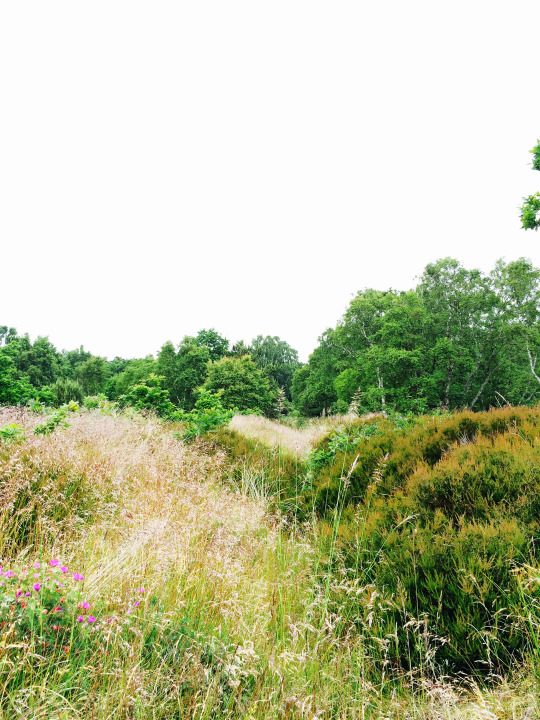

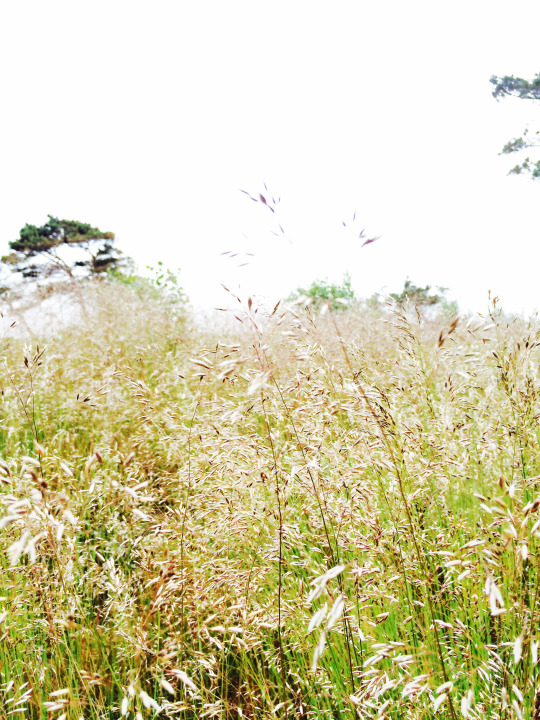
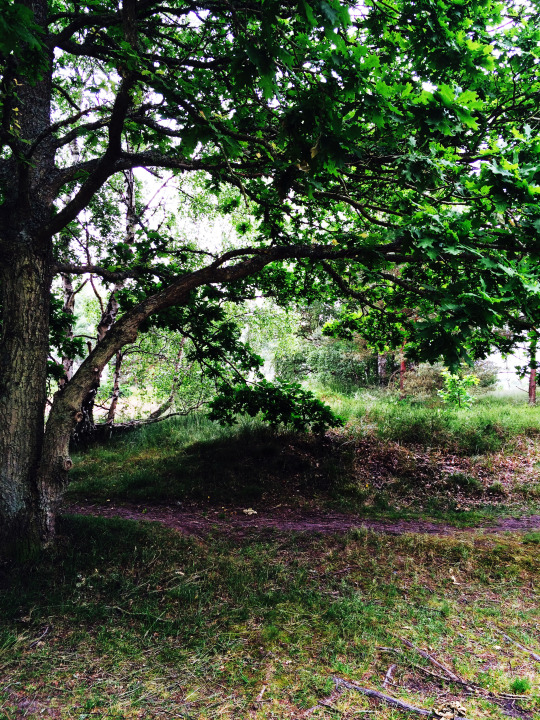






“I never really understood the word ‘loneliness’. As far as I was concerned, I was in an orgy with the sky and the ocean, and with nature.”
— Bjork
6 notes
·
View notes
Text
Thank you Imagining Malmo!
This is a great addition to my mapping of Space. The idea of using quantum physics to explain what space is, is great!
It really captures some sort of movement and change in space that is invisible for the eye. A way of concretizing something that is already so fuzzy, but still containing the facts that space is changeable and unfixed, filled with energy.
Spatial perception from Edmund Bacon's point of view.
Thoughts about Space.
A recurrent concept in this blog is the concept of spatiality, or space, as I often will call it. To find a proper definition for this concept is quite hard. I haven’t really managed to find one that I am satisfied with yet.
I’ll try to start making my own definition though; Space does not have to be visible, touchable or definite. In a room consisting of four walls you can find several spaces depending on other factors like, where the windows have been placed, the human movements, the different materiality, temporary objects like furniture and so on.
Okay so its so hard to give a definition of what space is.. Wikipedia has no better answer than mine, so I think this is something I need to work on. Be prepared for a recap.
5 notes
·
View notes
Text
Fooled and selectively sighted.
A while ago I was going to watch the Swedish/Danish series the bridge, and when I started watching the series I wasn’t really paying attention to the actual urban environment. But all of a sudden I turned silent. I realized what it was that I saw. Cause first my thoughts wandered into some sort of romanticizing of Copenhagen; water outside the office, metropolis, Copenhagen.
STOP there is no water outside the office, it is concrete and that is a place I recognise. In Sweden. I paused the series and started looking. Like actually looking.
Is it not strange? That one can see what one wants us to see? That our brain just decide something, and then we think that’s what we’re seeing?
The producers of the series had chosen to shot something in Sweden but when clipping; representing it as if it is in Denmark. I chose to believe that representation for a moment. But then I realized, I had been fooled. How easy isn’t it to fool someone, to convince them with the proper set of tools? It makes me sceptical, what else am I not actually seeing?
0 notes
Text
In architectural design the main ingredients are mass and space.
Design is not just about shape and solid structures, the real essence is the relationship between those two. Like Edmund Bacon wrote in his book Design of Cities published 1967; The empty space between the masses is therefore significant and possesses both functional and aesthetic qualities.
Bacon explains that the perception of space involves the entire gamut of our senses and emotions; it requires that our whole being is present to fully appreciate it. In fact he claims that the perception of space goes beyond brain activity.
Spatial perception from Edmund Bacon's point of view.
Thoughts about Space.
A recurrent concept in this blog is the concept of spatiality, or space, as I often will call it. To find a proper definition for this concept is quite hard. I haven’t really managed to find one that I am satisfied with yet.
I’ll try to start making my own definition though; Space does not have to be visible, touchable or definite. In a room consisting of four walls you can find several spaces depending on other factors like, where the windows have been placed, the human movements, the different materiality, temporary objects like furniture and so on.
Okay so its so hard to give a definition of what space is.. Wikipedia has no better answer than mine, so I think this is something I need to work on. Be prepared for a recap.
#space#spatial design#spatial perception#architecture#art#design#imagining malmo#thoughts#edmund bacon
5 notes
·
View notes
Video
“At the beach, life is different, time doesn't move from hour to hour, but mood to moment. We live by the currents, plan by the tides, and follow the sun.”
- Unknown
0 notes
Photo



WHY WE SHOULD LIE WITH MAPS - thoughts based on the introduction of the book How to Lie with Maps.
For now I have only read the introduction, but I am intrigued. I think that the book seems very interesting and I look forward to reading some more. The theme of the book is as you can guess about how we can tell lies and depict certain things with maps. It's an interesting approach towards maps and mapping. How we choose to represent a city or landscape.
I kind of feel like the writers point of view is from quite a geographical one, but he acknowledge the fact that maps today can be art or in the spirit of design. He is still questioning the fact that cartographers rarely are involved with the whole procedure of mapping.
I myself can understand his questions and agree with the fact that we as map-users should be aware of the fact that maps can lie in different ways, but I kind of feel like I'm a bit more artistically approaching maps. I don't think that they need too tell me everything; we have different maps for different things. And that approach is an approach I am also using. When I'm working with an urban project, I use different maps for different reasons. If I need to know where the property lines of an area are or where the different shops are, I would use two or maybe even three different maps. If I am in the making of a map, my first question is; what do I want to show? What is important and how can I show those things in the best readable way?
However the writer states that we learn from an early age; that we never should trust words and read between the lines, but that we learn to trust in maps and pictures. I however have never had that approach. I believe that a map should always show different things, and also it's only fair that we must reduce the amount of facts in a map. We can never show everything, there are to many layers. It's next to impossible to show everything and THAT is the exact reason of why we shouldn't!
3 notes
·
View notes
Text
A chameleon in the urban life - an analysis based on Walking in the city by Michel De Certeau.
I find this text really interesting, it’s poetically deep and it speaks to my inner geek. I basically love everything that supports my own views on how to build; building for human and human-scale.
Today’s architects often focus on a grander scale than the human one, what we see on street level is easily forgotten. I think its time for a change within the building industry, a new profession of mediators between the urban city and the people living within it. The author is describing the current view quite beautiful;
"The desire to see the city precede the means of satisfying it"
We must change this view into a quest for urban-improvement, to strive for an environment prepared for life and contingency.
Building for people and life, instead of building with a wish for grand architecture is not only more profitable but also a long-term investment. An investment through time, because buildings that are for life and the unexpected are not only versatile but like chameleons in the urban. The buildings must grow with the use and life that we fill it with.
Building for people also means accepting the space they are going to fill, that the architect and planner read and analyse the place they are going to build upon. Their buildings must breath and accept the history and feel of the people that are already using the space but also accepting the future use.
0 notes